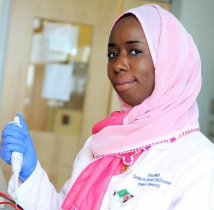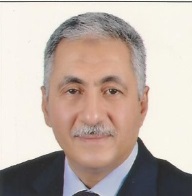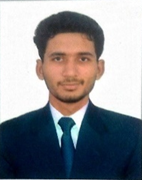Scientific Program
Keynote Session:
Title: The pain-killer carprofen elicits pleiotropic mechanisms of bactericidal action with potential to reverse antimicrobial drug resistance in tuberculosis
Biography:
Sanjib Bhakta is a reader in Molecular Microbiology and Director of Mycobacteria Research Lab at ISMB, Birkbeck, University of London & UCL. His speacilities are : Microbiology, Molecular Biology & Biochemistry, Drug Discovery, Target Identification and validation in Mycobacterium tuberculosis, Model & Method development (in vitro & ex vivo) for whole cell (phenotypic) screening of inhibitors, drug susceptibility testing, repurposing drugs.
Abstract:
The alarming rise of antimicrobial drug resistance in Mycobacterium tuberculosis coupled with the shortage of new antibiotics has elevated tuberculosis (TB) control to a major global health challenge. Repurposing drugs with known clinical properties and safety profiles offers a direct route to clinical trials. Our earlier studies using a whole-cell, high throughput phenotypic assay (HT-SPOTi) revealed that carpofen, a non-steroidal anti-inflammatory drug (NSAID), selectively inhibited the growth of replicating, non-replicating and multi-drug-resistant clinical isolates of M. tuberculosis [1-6]. The antibacterial activity of NSAIDs has been confirmed independently as in the case of aspirin and ibuprofen reducing mycobacterial loads in murine models. NSAIDs have also demonstrated sensitisation of mycobacteria to other antimicrobials. We have investigated the mechanisms through which NSAIDs eliminate M. tuberculosis from the host environment. Integrative molecular and microbiological approaches showed that carprofen, a bactericidal drug, inhibited bacterial drug efflux mechanisms. Carprofen also restricted mycobacterial biofilm-like growth, highlighting the requirement of efflux-mediated communicative systems for the formation of biofilms. Transcriptome profiling revealed that carprofen likely acts by targeting respiration through the disruption of membrane potential, which may explain why spontaneous drug-resistant mutants could not be isolated in practice due to the pleiotropic nature of carprofen’s anti-tubercular action. This repurposed mycobactericidal and immunomodulatory drug has the potential to reverse TB antimicrobial drug resistance, offering a swift path to clinical trials of novel TB drug combinations
Title: Antimicrobial use in aquaculture: Patterns and current knowledge on its contribution to the emergence and spread of antimicrobial resistance
Biography:
Lúcia Santos is a pharmacist, Master in Public Health, presently perusing her PhD degree in Food Security in Coimbra University – Portugal. Her investigation work has been focusing on food security, essentially related to the presence of antimicrobial residues in fish and related consequences on public health. Special focus is being given on the impact of antibiotic use in aquaculture on the global health crisis of antimicrobial resistance
Abstract:
Aquaculture is a fast-growing industry accounting nowadays for almost half of the fish supplies for human consumption, worldwide. The intensive and semi-intensive practices used to produce large stocks of fish, in small spaces, originate frequent disease outbreaks and, to control it, the use of antimicrobials, for prophylactic and therapeutic purposes, is a customary practice. The selective pressure exerted by these drugs – usually present in sub-therapeutic doses for prolonged periods, in water and sediments – represent the ideal framework for the emergence and selection of resistant bacterial strains, promoting and stimulating horizontal gene transfer. Passage of antimicrobial resistant genes and antimicrobial-resistant bacteria from aquatic to terrestrial animal husbandry and to human environments, and vice versa, with detrimental effects on both human and animal health, and also in aquatic ecosystem, is now largely recognized. A global effort must be developed in order to cease antimicrobial overuse in aquaculture, encouraging stakeholders to adopt other disease preventive measures, such as adequate hygiene standards, vaccines or probiotics, among others. Shaping a new path is crucial, in order to contain the increasing threat of antimicrobial resistance. Being antimicrobial resistance a global ecological event, the One Health strategy is the most appropriate way to address and tackle it. As postulated by One Health principle we must recognize that human, animal and environmental health are interconnected, that diseases are transmitted from humans to animals, and vice versa, and must therefore be tackled in both.
Title: Activity of antibiotics against dormant Mycobacterium tuberculosis
Biography:
Lanfranco Fattorini is responsible of the WHO Supranational Reference Laboratory of Rome for surveillance of drug-resistant TB, and is ECDC contact point for TB in Italy. In 2006 he set up the Wayne model of Mtb dormancy, and participated to the European FP6 project MILD-TB (Immunogenicity of Mtb lipids in the non replicating status of latency) and FP7 project STOPLATENT-TB (Latent tuberculosis: New tools for the detection and clearance of dormant Mtb). Presently, he is focussing the search of low-lipophilic drug containing combinations sterilizing dormant Mtb in hypoxia at pH 7.3, the pH of caseous granulomas, which is the hallmark of TB.
Abstract:
Statement of the problem: Tuberculosis (TB) is an infectious disease caused by Mycobacterium tuberculosis (Mtb). Furthermore, about 2 billion people are latently infected with Mtb, with 10% of them reactivating to active disease. Antibiotic treatments require 6 months of combination therapy with isoniazid (INH)+rifampin (RIF)+pyrazinamide+ethambutol for active TB, and 9 months of INH or 3 months of rifapentine (RFP)+INH for latent TB. In the lungs of active and latent TB patients, cellular and caseous granulomas coexist, with Mtb ranging from aerobic actively replicating (AR) to anaerobic nonreplicating (NR), dormant, cells. Low oxygen pressure restricts growth of aerobic to anaerobic Mtb in cholesterol/triacylglycerol-rich, low-vascularized, caseous granulomas, and allowing bacilli to transit into a dormant, drug-refractory, and state. In cellular granulomas, AR cells are killed by current therapy, while in caseous granulomas NR bacilli persist in a dormant state. New research approaches to eliminate NR Mtb surviving after therapy need to be developed, to shorten therapy of active TB below 6 months, and reduce the reservoir of latently infected individuals. Methodology & Theoretical Orientation: Dormant cells were obtained by the Wayne model of hypoxia at pH 5.8 and 7.3 (mimicking cellular and caseous granulomas, respectively). AR and NR cells were treated with hydrophilic (logP≤0) and lipophilic (logP>0) drugs to find combinations sterilizing both cells, as determined by colony-counts and day-to-positivity (DTP >100 days) in MGIT960 system. Findings: At pH 5.8, lipophilic drugs were more active than hydrophilic agents against NR Mtb, and RIF+moxifloxacin+amikacin+pretomanid sterilized AR+NR cells after 14 days of exposure. At pH 7.3 (pH of caseum), out of 12 antibiotics tested, only RIF and RFP killed NR cells; the search for sterilizing low-lipophilic drug containing combinations is ongoing. Conclusion and Significance: Overall, Wayne models can be useful for testing drug activity against dormant Mtb to guide the selection of future, shorter, rifamycin-containing therapies.
Oral Session 1:
- Oral Session I: Antibiotic Therapy | Antibiotic resistance and prevention | Pharmacology of Antibiotics | Applications of Antibiotics | The Next Generation Approch of Antibiotics
Oral Session II: Medical & Clinical Microbiology |Environmental Microbiology | Microbial Technology and Genetic Engineering | Pharmaceutical Microbiology

Chair
Giulio Tarro
Foundation T. & L. de Beaumont Bonelli
Italy

Co-Chair
Seiji Negoro
University of Hyogo
Japan
Title: DNA-minor groove as a molecular target for the design of highly-effective anti-tubercular agents
Biography:
Federico Brucoli has a degree in Pharmacy from the University of Palermo, Italy and a PhD in medicinal chemistry from UCL School of Pharmacy, London. His research interests focus on antibacterial and cancer chemotherapy, and the study of natural products as templates for future drug design. Emphasis is given to the synthesis and bioassay-guided evaluation of “small-molecule” anticancer/antibacterial compounds, which are designed to interact with an individual protein target or predetermined DNA sequence. Recent efforts have been directed towards the identification of new therapeutic drug leads to combat tuberculosis, a serious infectious disease caused by the slow-growing Mycobacterium tuberculosis bacterium. Dr Brucoli is hoping to make a significant contribution to the global fight against tuberculosis, which affects 10.5 million people worldwide and kills 1.4 million people every year, by developing novel anti-tubercular agents able to bind to discrete DNA regions and disrupt the bacterial transcription factor machinery.
Abstract:
Statement of the Problem: Tuberculosis (TB) is one of the top ten killers worldwide and remains the leading cause of death among infectious diseases. There is still a limited number of validated TB targets and it is crucial to identify novel, or re-purpose existing, molecular targets to generate new anti-tubercular drugs to fight the tuberculosis pandemic. To this end, the well-characterised DNA-minor groove might be used to develop highly-effective anti-tubercular probes with a mechanism of action, i.e., DNA-binding, different from that of current TB drugs. DNA-minor groove binding agents can recognise discrete DNA sequence, modulate the activity of transcription factors and ultimately cause cell death. Methodology & Theoretical Orientation: Libraries of distamycin analogues and pyrrolobenzodiazepine(PBD)-C8-polyamide conjugates were synthesized and screened against slow-growing, pathogenic Mycobacterium tuberculosis H37Rv and Mycobacterium bovis BCG strains, and evaluated for DNA-binding activity using DNase I footprinting experiments. The compounds were also tested using the in vitro Wayne model of hypoxia-induced dormancy at pH 5.8 and 7.3 to reproduce environments of cellular and caseous granulomas. Findings: The PBD-conjugates possessed significant anti-tubercular properties with minimum inhibitory concentration (MIC) values ranging from 0.04 – 5.19 μg/mL against M. tuberculosis and M. bovis, although showing some degree of cytotoxicity. H37Rv-active pyrrole(Py)-pyrrole(Py)-thiazole(Thz)-PBD (Fig.1) bound with high affinity to discrete sequences (6-8 nucleobases) of a DNA duplex and showed growth inhibitory activity at 5.1 μg/mL against hypoxic, non-replicating (NR) M. tuberculosis cultures and aerobic cells at pH 7.3. Conclusion & Significance: DNA-minor groove binding agents are remarkable chemical tools with significant anti-tubercular activity that represent promising leads against aerobic and NR, dormant M. tuberculosis.
Title: Antibiotic resistance - Prospects of a novel remedy from natural products
Biography:
Dr. Prakash U. Tahiliani completed his MBBS in 1981 from Ravi Shankar University, Raipur, INDIA. He is working as the clinician, consultant Malariologist & Infections at DN Mehta Parsi General Hospital, Navsari, INDIA. He has been working on the Diagnosis & Treatment of Malaria since 1983. An anti-malarial herbs-mineral research product discovered by him & manufactured by ‘Prime Ever Ayurvedic Research Laboratories’ is available in the Indian market since 2001 with the name “Cap Plasmonil”.
Abstract:
Antibiotic resistance is rising to dangerously high levels in all parts of the world. In the US alone more than two million people become infected with bacteria that are resistant to multiple drugs (Report of CDC – 2013).
Antibiotic resistance increases health care costs and lowers the quality of medical treatment. A World Health Organization (WHO) report released in April 2014 stated, "this serious threat is no longer a prediction for the future, it is happening right now in every region of the world”.
Regarding the phenotypic mechanism of development of antibiotic resistance, eminent US herbalist Stephen Harrod Buhner says “Every life on this earth is highly intelligent and unbelievably adaptable to ensure its survival”. As soon as a bacterium develops a method for countering an antibiotic, it systematically begins to pass the knowledge on to other bacteria at an extremely rapid rate. In the presence of an antibiotic, learning rate of bacteria increases by several orders of magnitude. These observations and statements have invaluable practical implications to control the development of antibiotic resistance.
Without urgent action, we are heading for a post-antibiotic era, in which common infections and minor injuries can once again kill the people as it used to happen in the pre-antibiotic era. Organ transplants, chemotherapy, and surgeries become much more dangerous without effective antibiotics for the prevention and treatment of infections.
The pharmaceutical industry has little incentive to invest in antibiotics because the potential financial returns are less likely to cover the cost of development. Now time has come to discover and develop new antibiotics from natural products by “Reverse Pharmacology” approach which reduces three major bottlenecks cost, time and toxicity and being in contact with pathogenic micro-organisms since centuries together, natural products / medicinal herbs have developed complex substances with them which are highly effective to tackle with these pathogens.
Title: Knowledge and beliefs on antimicrobial resistance among clinicians: Step towards antibiotics stewardship
Biography:
Rucha Ridhorkar is a third year student pursuing her MBBS at NKPSIMS, Nagpur,India. She has a bright academic record securing honors in six subjects of the medical course, namely (Physiology, Biochemistry, Microbiology, Pathology, Pharmacology, Forensic medicine & toxicology). She has a research-oriented mind and has successfully conducted the NKP STS 2017 research on Antimicrobial Resistance for which she was awarded with a scholarship.Her work on establishing role of a medical student in antibiotic stewardship is a multifactorial approach where the knowledge and beliefs of clinicians about antimicrobial usage are assessed, thus helping in formulation of efficient antimicrobial practices.
Abstract:
Emergence of antimicrobial resistance is well recognized as a global threat to human health. Antimicrobial stewardship is a coordinated program that promotes the appropriate use of antimicrobials. There is a need for increased education and awareness about inappropriate use of antimicrobials amongst the public and healthcare professionals. Hence this study was planned to conduct a survey, to assess the knowledge and beliefs on antibiotic resistance amongst the clinicians. 100 clinicians were included in this study which included physicians, pediatricians. Surgeons and Gynecologists and obstetricians. A structured questionnaire was provided online to the participants. More than 90% of physicians followed by 81% of pediatricians strongly agree that ignorance to antibiogram while prescribing antibiotics is a crucial aspect is promoting antimicrobial resistance. Need of regular CMEs on proper antimicrobial usage was unanimously agreed upon by all 4 groups. Our study showed that 90% of the pediatricians and physicians agree to poor hand washing and poor infection control practices being the factors responsible for contributing to antimicrobial resistance. Failure to properly diagnose patient’s infective conditions for diagnosis of infectious diseases was reasons agreed upon by 60% of surgeons and gynecologists and 90%of physicians and pediatricians. 81% pediatricians and 60% of physicians felt that patient’s demand for antibiotics being contributory. However, 90% of all four groups agreed upon patients failing to adhere to treatment and discontinuing prescribed antibiotics midway the treatment being a significant cause.
Title: Sawdust and endocellulase: A review
Biography:
D. K. Acharya is an Assistant Professor at Department of Microbiology, Faculty of Applied Sciences, Parul Institute of Applied Sciences and Research, Parul University, India. He has the responsibility of teaching and independent research at postgraduate and undergraduate level. He is completed his Ph.D. in 2011, MPhil in 2008 and MSc with Microbiology in 2006 from Gujarat Vidyapith, Ahmedabad, India. His expertise field is the applied microbial research. He is a Member of Editorial Advisory Boards of Refereed Journals. Managing Director, Microbiology world (e-Magazine) ISSN 2350-8744 (Sep 2013 to Feb 2014). International Journal of Microbiology and Allied Sciences, ISSN 2382-5537
Abstract:
Lignocellulose is a major renewable natural resource of the world and represents a major source of renewable organic matter. It is the major structural component of plant biomass such as woody and non-woody plants. The recent thrust in bioconversion of agricultural and industrial wastes to chemical feedstock has led to extensive studies on cellulolytic enzymes produced by fungi and bacteria. Cellulase is a synergistic enzyme that is used to break up cellulose into glucose or other oligosaccharide compounds. Sawdust is a byproduct produced from the wood processing industry. Generally sawdust composed of fine particles of wood. Sawdust has a variety of practical uses, such as in agriculture mulch and also in the manufacturing of the particle board. The abundance of sawdust waste is hence seen here as a good supporting factor in considering its usage as potential substrate for bioprocesses. The utilization of sawdust as a potential substrate for producing enzymes may serve a dual purpose of reducing the environmental pollution along with producing a high value commercial product. Pretreatment is necessary to reduce recalcitrance of lignocellulosic biomass for enhancing cellulose component to enzymatic hydrolysis in subsequent steps. Sawdust was investigated for their ability to support cell growth and cellulase production. This work focuses on factors relevant for improvement of enzymatic hydrolysis of saw dust.
Title: Numerical analysis of the adhesive interaction of bacterium and glass surface
Biography:
Raimondas JaseviÄÂius has completed his Ph.D. in 2011 from Vilnius Gediminas Technical University (VGTU) and received postdoctoral studies from Vilnius University in 2013-2015. Also, he has earned DAAD internship at Otto von Guericke University in 2007. Currently, he is the senior researcher at VGTU. He has built bacterium interaction models for numerical simulations. The models are able to describe the bacterium interaction process. He published more than 18 papers in reputed journals
Abstract:
Understanding of influence of bacterial adhesion opens a new possibility to analyze the bacterial mutual interaction as well as the interaction of bacterium with various surfaces. Contrary to their lower inertia, bacteria have the ability to stick to surfaces due to adhesive forces. This characteristic opens up the opportunity to understand adhesive ultrafine particles by numerical modeling the sticking ability. The interaction of adhesive spherical S. aureus under impact is investigated numerically by applying the discrete element method. An adhesive dissipative contact model is applied by implementing different interaction forces, such as the influence of electrostatic double layer force. Normal loading is represented by taking into account the elastic Hertz contact model as well as elastic-plastic Tomas model. Viscous damping is described by the modified nonlinear Tsuji model. Energy dissipation model related to change of influence of adhesion is given. This model is important to predict critical bacterial sticking velocity. The influence of deformation dependent adhesion forces for a bacterium is also illustrated during the deformation process. Elastic-plastic bacterium interaction model is given. This model is important to describe non-elastic deformation behavior of heterogeneous cell. The presented model also includes the ability to obtain sticking process for bacteria. Such model can be adapted for modeling of group of microorganism mutual interaction, such as biofilm formation or infection transmission. Dissipative interaction is described during bacterium interaction with a surface at a distance as well as during the deformation process.
Title: Incidence of superficial mycosis infection among children in some elementary schools in Benin city, Nigeria
Biography:
Dr. Francis Oronsaye is presently working as an associate professor at University of Benin, Nigeria from where he pursued PhD in Medical Microbiology. After attaining doctorate, he served in various positions including lecturer, senior lecturer and principal investigator for various projects involved in the same university. He has attended more than 20 international conferences and delivered talks in his field of expertise. He is a member of International Research and Development Institute and American Society of Tropical Medicine and Hygiene. He has published more than 50 research articles in peer-reviewed journals. He was also successful in designing a lotion for treating all kinds of superficial infections of bacterial and fungal origin. It is currently undergoing toxicology testing and is also awaiting NAFDAC registration.
Abstract:
Background: Superficial mycosis is a common feature among school-age children in developing countries, due to an unhygienic environment where they reside and play. These diseases sin and nails The economic downturn of these countries makes it very difficult purchase the necessary antimycotic drugs and remedies to compact these infections, Moreover, over crowdy and close association with their play-mate can lead to outbreak off epidermics which can result in more serious and even fatal consequences, the need to audits the types of superficial mycosis among these children of School age cannot be overemphasised.
Methods: One hundred school children from selected Primary schools in Egor Local Government Area of Edo state were randomly recruited into the study; Consent was obtained from the local Government Education Ministry before the commencement of the study. Skin swabs hairs were collected from the children and were delivered to the laboratory for processing with minimum delay. Swabs were cultured unto blood agar plates and Sabuoroid agar slopes and incubated at 37oC overnight. The direct microscopic examination was done on the scales, taken off hairs placed on microscope slides containing few drops of potassium hydroxide and observed under the microscope using X10 and X40 objectives
Results: fifty percent of the children tested had various fungal infections ranging from Trichophytonmetagogrophyytes –Aspergillus spp., Penicillum spp. Candida albicanns and Mucor spp.
Conclusion: This study presents the isolation of various fungal species from children in some primary Schools in Benin City, Nigeria.
Title: Scaffold protein RACK1 protein potentially regulates IRES-mediated virus translation: A target for HIV-1 proliferation inhibition
Biography:
Israa Abdullah Malli earned her bachelor’s degree in medical laboratory sciences at King Abdul Aziz University, Jeddah- KSA; and supported by King Saud bin Abdul-Aziz University for Health Sciences (KSAU-HS), she pursued a Master's in Biotechnology from the Catholic University of America (CUA), Washington, D.C. USA in 2012. She earned her Doctoral degree from the Department of Microbiology in 2017 from Howard University.
Abstract:
Statement of the Problem: AIDS is a serious health burden with approximately 36.7 million people who are living with HIV infection. It is estimated that 2.1 million people are newly infected annually, while almost 2 million die from AIDS-related illnesses every year. Moreover, as HIV-1 continues to mutate with even the most efficient drugs, new chemotherapeutics will always be needed. It has been shown that an Internal Ribosome Entry Site (IRES) is utilized by various viruses to enhance viral genomic translation while the host cap-dependent translation is reduced. Analysis of HIV- 1 genome from clinical isolates revealed that HIV-1 has two identified IRESs among its transcripts. Receptor for Activated C Kinase 1 (RACK1), a ribosomal protein, is known to be essential for IRES recognition of viral mRNAs. But it is not required for 5' capped recognition in most DNA viruses as well as for host 5' capped mRNAs. Since RACK1 is important for the translation process of IRES-utilizing viral genes, it, therefore, hypothesized that inhibiting the host RACK1 protein function would potentially prevent HIV-1 induced translation. The purpose of this study is to analyze the role of RACK1 in the IRES-mediated translation of HIV-1 virus proliferation in HEp2 cells. Methodology & Theoretical Orientation: RACK1A crystal structure based in silico drug docking experiment resulted in the isolation of RACK1 functional inhibitor compounds" These compounds are utilized in the current study. The functional molecules, SD29, and its analogs were used to investigate the inhibitory potential of these compounds as anti-HIV-1 drugs. The efficacy of the inhibitor compounds on the regulation of HIV-1 IRES-based translation was assayed in a dual luciferase reporter constructs. Findings: The compounds were found to inhibit the HIV-1 IRES structural proteins in a dose-dependent manner. The compounds were found also to inhibit the single cycle competent pseudo-HIV-1 proliferation in HEp2 cells. Conclusion & Significance: These results have validated the compounds as a host-targeted anti-HIV-1 drug. It is possible that the drugs may also have broader activities as they could potentially target other IRES utilizing viral proliferation. It is postulated that such host-targeted anti-viral would circumvent the development of drug resistance that has been observed in the treatment of HIV-1 infection. ]
Title: Fungal orbital infections in a tertiary eye center in Egypt
Biography:
Mohamed A. Eldesouky has completed his Ph.D. at the age of 36 years from Tanta University and Postdoctoral Studies from School of Medicine, University of Tennessee, Memphis. He is the Director of Oculoplasty and ocular pathology service in Tanta University Eye Hospital. He has published more than 25 papers in reputed journals
Abstract:
Fungal infections of the orbit, although not as common as bacterial etiologies, still remain important causes of orbital inflammations and proptosis. The past decade has seen a resurgence of a variety of fungal agents involving orbits due to rising trends of HIV infections and other immunosuppressive comorbidities like diabetes; however, the incidence may vary based on regional epidemiology. The modalities of orbital invasion can be contiguous from sinuses or oropharynx or through direct deposition from foreign bodies. Till now fungal orbital infections still deserve very poor prognosis. The present study would discuss the various microbial factors, specific symptomatology, clinical signs, investigative modalities, management, complications, and outcomes of fungal infections of the orbit
Title: Talaromyces pinophilus a pioneering fungi strain as phyto intensification
Biography:
Dhaval Patel has his expertise in plant fungi interaction in improving the health of the agricultural soil. He deals with the biocontrol and phyto-enhancer activities of fungi and also has expertise in studies relating to phytohormones production, phosphate solubilization, ammonia production, siderophore formation, and also deals with cellulase and chitinase enzyme for biocontrol activity.
Abstract:
Talaromyces pinophilus (MG011365) fungi belongs to family Trichocomaceae. The aim of current research was to explore different fungi as Plant Growth Promoting Fungi (PGPF). The study involves the isolation of different fungi from the rhizosphere of various agriculture farms. After isolation of T. pinophilus its’ ability to produce phytohormone was carried out (Indole Acetic Acid, IAA). IAA estimation was carried out using Salkowski reagent. T. pinophilus was allowed to grow in cultivation media (Potato Dextrose Broth, PDB) in which one was supplemented with tryptophan (TRP) and one without TRP (TRP a precursor for IAA production). Phosphate solubilization was carried out by growing T. pinophilus in pikovskaya’s media and latter estimated using stannous chloride method, showing decent solubilization of phosphate. Further enzyme assay for cellulase and chitinase were carried out. For cellulase enzyme production 1% carboxymethylcellulose (CMC) and for chitin enzyme production 1% colloidal chitin was used along with 1X MM9 agar media. Statistical analysis was carried out with Trichoderma longibrachiatum (MG011366) which is one of the most explored PGPF strain. Talaromyces pinophilus showed predominant effect as compared to Trichoderma longibrachiatum
Title: Antimicrobial resistant lactic acid bacteria with probiotics potentials isolated from caged broiler birds
Biography:
Nsikak Umo Stephen was born on 8th February 1982 in Lagos, Nigeria. In 2001 he graduated from secondary school at Civil Service Model College, Lagos and continued with BSc Microbiology in the University of Port Harcourt, Nigeria in 2005. Upon graduation in 2010 he started the MSc program in industrial Microbiology at University of Nigeria, Nsukka. His thesis was on sugar tolerance performance of palm wine yeasts isolated from parts of Nsukka, Nigeria. In 2015 he had an oil spill management and remediation trainee position with Nigerian Content Development and Monitoring Board. In 2016, he got employed with Akwa Ibom State University as an Assistant Lecturer. His research interest includes probiotics lactic acid bacteria of poultry origin with extension on free range birds. In 2017, he started his PhD program entitled “Quantitative Microbial Risk Assessment for L. Monocytogenes and Salmonella on Pumpkin leaves” at University of Uyo, Nigeria.
Abstract:
Antibiotic-resistant pattern of lactic acid bacteria obtained from poultry origin was evaluated using standard microbiology methods and integrative approaches. A total of seven isolates were obtained. Upon growing anaerobically at 37oC for 24 hours they all showed varying level of tolerance to the bile salt, pH and NaCl, with Enterococcus sp. B51 having the highest tolerance to bile salt. Five (71.4%) of the isolates were resistant to ciprofloxacilin and erythromycin, 4 (57.1%) were resistant levofloxacin, 3 (42.9%) were resistant norfloxacin, amoxicillin, chloramphenicol and ampiclox, 2 (28.6%) were resistant to gentamycin and Streptomycin. All the isolates were susceptible to rifamycin except Enterococcus sp. B42. The isolates showed high resistance to fluoroquinolones and macrolide class of antibiotics thus posing some levels of public health concerns.
Keynote Session:
Title: Tumor liberated protein (TLP) as potential vaccine for lung cancer patients
Biography:
Giulio Tarro graduated from Medicine School, Naples University in 1962. He worked as Research Associate at Division of Virology and Cancer Research, Children’s Hospital from 1965-1968, and Assistant Professor of Research Pediatrics College Medicine from 1968-1969, Cincinnati University, Ohio (Oncological Virology). He has been the Professor at Naples University from 1972-1985, the Chief Division Virology from 1973-2003, the Head Department Diagnostic Laboratories from 2003-2006. Since 2007 he has been the Chairman Committee of Biotechnologies and Virus Sphere, World Academy Biomedical Technologies, UNESCO, the Adjunct Professor Department Biology, Temple University, College of Science and Technology, Philadelphia and the recipient of the Sbarro Health Research Organization lifetime achievement award (2010). His researches have been concerned with the characterization of specific virus-induced tumor antigens, which were the "fingerprints" left behind in human cancer. Achievements include patents in field; the discovery of Respiratory Syncytial Virus in infant deaths in Naples and of tumor liberated protein as a tumor-associated antigen, 55 kilodalton protein overexpressed in lung tumors and other epithelial adenocarcinomas
Abstract:
Previous studies have investigated the potential role of blood-based tumor markers for early detection, diagnosis, prognostication, post-operative follow-up as well as monitoring of tumor burden and response to treatment in advanced disease stages. To date, the most commonly used markers include neuron specific enolase (NSE), carcinoembryonic antigen (CEA), cytokeratin 19 fragments (CYFRA 21-1) and cancer antigen CA 125 (CA 125). However, low sensitivity, specificity or reproducibility limit their clinical utility in the care of patients with lung cancer and no single marker has gained widespread acceptance as diagnostic test, prognostic indicator or monitor of treatment response. Ideally, a tumor marker should have a sensitivity and specificity of 100%, a goal that is almost never achieved. In 1983, a tumor-associated antigen was isolated from NSCLC and named tumor liberated protein (TLP). The immunohistochemical analysis revealed a cytoplasmic localization of TLP in small and larger granules. In some specimens it was also detected in the lumen of atypical glands and in the bronchial secretions, suggesting that TLP could be considered a secretory product of neoplastic cells. Tarro et al. have demonstrated that when TLP is extracted from a patient’s tumor, purified in the laboratory and reintroduced into the body, it boosts an immune response in the host. The partial sequence analysis of this protein led to the synthesis of corresponding antigenic peptides that have been used to produce antisera in rabbits. According to Tarro et al., four TLP-derived peptides were identified: RTNKEASI, GSAXFTN, QRNRD and GPPEVQNAN. Anti-RTNKEASI rabbit sera reacted specifically with NSCLC tumor extracts as well as sera from lung cancer patients. TLP was detected in sera of 53.1% of NSCLC patients (N = 534) with 75% being positive in the early stage (stage I) dropping to 45% in the late stage (stage IV), suggesting a potential role as early screening biomarker.
Title: Protein stability and subunit assembly of nylon hydrolase: Structural basis discriminating correct subunit assembly, aggregation, and intracellular degradation of precursor protein
Biography:
Seiji Negoro is the Professor at the Department of Applied Chemistry, Graduate School of Engineering, University of Hyogo. He has completed Ph.D. from Graduate School of Engineering, Osaka University, Japan in 1982. He appointed as Research Associate at the Department of Biotechnology, Osaka University from 1982-1992. He served as an Associate professor at the Department of Biotechnology, Osaka University from 1992-1997. His Scientific research field focuses on Enzymology, Protein engineering, Environmental biotechnology.
Abstract:
Protein-protein interactions leading to correct subunit assembly play important roles in protein stability and/or various biological functions, which could include the following: i) Regulation of enzyme activities by the allosteric effect, ii) Generation of an active center by utilizing several catalytic/substrate-binding residues located in different subunits. iii) Generation of a multifunctional enzyme by integrating several functions initially compartmentalized in different enzyme subunits into a single oligomeric enzyme. In addition, the stability of a monomeric protein is generally improved by the oligomerization of the protein. Nylon hydrolase (NylC) is one of the three enzymes (NylABC) responsible for the degradation of the by-products of nylon-6 manufacture (cyclic and linear oligomers of 6-aminohexanoate (Ahx) with a degree of polymerization greater than three) and various aliphatic nylons (nylon-6, nylon-66, etc.) (Fig. 1) (1-8). NylC is initially expressed as an inactive precursor (36 kDa). However, the precursor is cleaved auto-catalytically at Asn266/Thr267 to generate an active enzyme composed of ï¡ (27 kDa) and ï¢ (9 kDa) subunits. Four ï¡ï¢ heterodimers (molecules A-D) form a doughnut-shaped quaternary structure (Fig. 2). In this study, the thermostability of the parental NylC was altered by amino acid substitutions located at the A/D interface (D122G/H130Y/D36A/L137A) or the A/B interface (E263Q) and spanned a range of 47 °C (5,6). From the analytical centrifugation data of the various mutant enzymes, we conclude that the assembly of the monomeric units is dynamically altered by the mutations. Considering structural, biophysical, and biochemical analyses, we discuss the structural basis of the stability of nylon hydrolase. Finally, we propose a model that can predict whether the fate of the nascent polypeptide will be correct subunit assembly, inappropriate protein-protein interactions causing aggregation, or intracellular degradation of the polypeptide.
Title: Human ribonucleases and derived peptides to tackle antimicrobial resistance
Biography:
Ester Boix is leading the research group on “Human host defence RNases” at the Universitat Autonoma de Barcelona, Spain. She was awarded in 2002 as a Ramon y Cajal senior researcher and is Full Professorship accredited since 2016. She has published more than 70 papers in peer-review journals, mostly as a corresponding author. Her main research interests are focus on the mechanism of action of human antimicrobial RNases, as promising proteins for drug design. Her research group is a pioneer in the development of expression protocols for recombinant RNases, the first report of human RNases structural studies by X-ray crystallography and identification of RNases host defense properties. Latest works are based on structural-functional studies of antimicrobial RNases towards the identification of functional domains applied to the design of novel antibiotic agents to combat bacterial resistance
Abstract:
Emergence of bacterial resistance to most common antibiotics urges the design of novel antimicrobial drugs. Antimicrobial proteins andpeptides (AMPPs) are key players of the host innate immunity and exert a rapid and multifaceted action that reduces the development of bacterial adaptation mechanisms. Our research group has been long-time exploring the mechanism of action of human ribonucleases involved in host defence. Human host defence RNases are members of the vertebrate specific RNase A superfamily. They are expressed by a diversity of innate immune cells and are endowed with antimicrobial properties. Secreted upon infection, they contribute to protecting our body fluids from invading pathogens. We have identified the structural determinants that determine the protein antimicrobial activity. A combined multifaceted action ensures an efficient eradication of bacterial resistant forms such as biofilm communities and macrophage intracellular resident mycobacteria. Based on structure- functional studies and by applying a positional scanning library we have identified the minimal pharmacophore entity and designed derived peptides that encompass most of the parental protein properties. The results underline the potentiality of RNases and derivatives as alternative antibiotics to combat bacterial resistance
Title: Role of efflux pumps in drug resistance in M. tuberculosis
Biography:
Prof. Mandira Varma Basil is a Medical Microbiologist currently working at Vallabhbhai Patel Chest Institute, Delhi, India where she is incharge of the Mycobacteriology unit. She obtained her MD in Microbiology from the University of Delhi and her DNB from the National Board of Examinations, Delhi, India. She is the recipient of the Department of Biotechnology (Government of India) Overseas Associateship and the Indian Council of Medical Research International Fellowship. Her main areas of interest include TB diagnosis, drug resistance in M. tuberculosis, molecular epidemiology of M. tuberculosis and non-tuberculous mycobacteria. Dr. Varma-Basil has several publications and book chapters to her credit.
Abstract:
Genomic mutations in drug targets have been identified as the major cause of drug resistance in M. tuberculosis. However, a section of isolates does not possess these mutations despite being drug resistant. Approximately 20 to 30% of clinical isoniazid (INH) resistant, 5% rifampicin (RIF) resistant and 40% Ethambutol (EMB) resistant M. tuberculosis isolates do not harbor mutations. Therefore, it is evident that other, more undefined mechanisms play a role in drug resistance. Analysis of genome sequences has shown that M. tuberculosis has multiple putative efflux pumps. However, the role of efflux pumps in intrinsic and acquired resistance has been neglected as a major cause for antibiotic resistance of M. tuberculosis and has only recently received attention. We evaluated the role of putative efflux pumps in providing resistance to INH, RIF, and EMB in clinical isolates of M. tuberculosis. Isolates were also analyzed for canonical mutations in katG, inhA, rpoB, and embB306. Our study suggested a possible association between efflux pumps and resistance to RIF, INH and EMB. Although the mechanism behind efflux pumps overexpression and regulation is not clearly understood, it could be relevant to study mutations upstream or in the predicted promoter region of these genes to identify additional molecular markers for drug resistance.
Oral Session 1:
- Oral Session III: Antibiotic Therapy | Antibiotics in Oncology | Genetics of Antimicrobial Resistance | Antibiotics for emerging & Re-Emerging Diseases

Chair
Sanjib Bhakta
University of London
UK

Co-Chair
Lanfranco Fattorini
Supranational Reference Laboratory of Rome
Italy
Title: Growth dynamics and drug resistance pattern of methicillin resistant Staphylococcus aureus under the effect of panchgavya: Possible next generation cost effective natural drug
Biography:
Dr. Anup Kainthola has his expertise in the field of Medical Microbiology and Immunology. He worked on antibiotic resistance pattern of CA MRSA during his doctoral work and on radiation mediated damages to gastrointestinal tract and translocation of microbes thereafter at Defense Research &Development Organization, India. Out of his passion for natural drugs and antibiotic resistance burden, he successfully demonstrated the activity of panchgavya against drug resistant bacteria. His aim now is to provide molecular grounds to support his theory so as to attract industry players to take panchgavya as final answer to antibiotic resistance
Abstract:
Acquisition of drug resistance for major β-lactam antibiotics has worsened the problems of managing MRSA outbreaks. Hence need of a cost effective natural antibiotic with nil drug resistance induction potential is required. We have checked the growth dynamics and patterns of drug resistance of the two strains of MRSA (HA MRSA (D+ve) and CA-MRSA (SCC mec IV)) under the effect of Panchgavya (An ayurvedic solution, which is prepared by mixing 5 ingredients obtained from local breed of cow). Growth parameters were assessed by fitting growth models to turbidity growth curves or to detection times of serially diluted cultures either directly or by using Anlaysis of Variance (ANOVA) approach. Resistance profile against β-lactam drugs and hemolysin production was determined by kirby bauer disc diffusion method and culturing the strain on blood agar (for Hemolysis). Both sets were tested against the control sets of CA and HA MRSA (ATCC). It was interesting to observe that in comparison to the river water, growth of CA-MRSA was substantially ceased in panchgavya. Bacteriostatic activities of panchgavya was reported as there was a minimal increase in CFU/ml of both the MRSA strains even after 24 hrs of incubation. Production of haemolysin was delayed in panchgavya treated strains by 30 hrs approximately. A marginal 1-2 mm of inhibition zone was observed in CA MRSA which was only visible in 2 out of 5 sets and hence hypothesis of drug resistance reversal couldn’t establish. We thus support the theory that panchgavya apparently interfere in the growth dynamic of both strain of MRSA (HA& CA) by elongating the lag phase. Further molecular studies to check the Scc mec gene expression pattern under panchgavya stress is underway to give a clear picture of mode of action of panchgavya.
Title: Invasive Yeast Infections in ICU patients
Biography:
Róbert Šimon works as a general surgeon on 2nd Surgical Clinic of University Hospital in Košice, Slovakia. He is also teaching surgery at the Faculty of Medicine.
Abstract:
Statement of the Problem: Invasive yeast infections are serious systemic infections associated with high mortality. While in oncohematologic patients the most often yeast infection is invasive aspergilosis, in patients hospitalised in intensive care units it is invasive candidiasis. The main problems in intensive patients are: to define patient at risk, early diagnosis of yeast infection, and the last one - the fact, that the ratio of C. albicans and non- C. albicans candidiasis has changed in favour of non-C. albicans strains of yeast. The greatest increase was recorded for C. parapsilosis and C. glabrata The incidence of candidiasis significantly increases the mortality of patients, although the timely commencement of antimycotic therapy is a key factor in increasing their survival. The presence of yeast in the blood is never considered a possible contamination of the sample, there is always a need to look for the source from which the yeast was washed into the blood. Clinical signs of invasive yeast infection are non-specific and do not differ from symptoms of bacterial infections. The relationship between hospital mortality and the delay in antimycotic therapy intervention has been demonstrated by several authors. Although, C. albicans is the most common yeast isolate presented in haemocultures, the non-C. albicans ratio has increased in recent years, especially C. glabrata and C. parapsilosis. In Luis Pasteur University hospital, among the 101 investigated samples of biological material taken from primary sterile sites between January 2013 and June 2015 form ICU patients, C. albicans were identified in most patients from ICU (48 cases, 48.6%). C. parapsilosis was identified in 8 samples (7.9%) and was the third most commonly identified non-C albicans yeast after C. glabrata and C. krusei.
Conclusion: The most patient at risk hospitalized in ICU are: complicated surgical patients, transplant patients, patients receiving biological treatment, oncohematologic (neutropenic) patients, child whit low birth weight, immunocompromised patients, patients in malnutrition. Therapy according ESCMID guidelines 2012 or IDSA guidelines 2016 can be helpful.
Title: Amide derivatives of vancomycin to overcome antibiotics resistance
Biography:
Dr. Ahmad Hussen Tareq has expertise in developing peptide-based antibacterial agents to overcome antibiotic resistance. He focused on synthesis and modification of potent glycopeptide antibiotics like vancomycin and teixobactin to overcome bacterial drug resistance. He worked on the diverse chain of antibiotic drug development, from lead discovery, drug development, chemical modification, invivo/invitro testing, pharmacological analysis to pre-clinical trials. In the above-mentioned projects, he utilized carboxamide bond formation to develop a simple and highly efficient methodology for vancomycin analog synthesis. As an extension of his work, he developed a method for synthesis of Teixobactin analogs. These next-generation antibiotics can significantly help in our fight against bacterial drug resistance.
Abstract:
Glycopeptide antibiotics were once considered as drug of choice of serious gram positive infections. These antibiotics interrupt bacterial cell wall synthesis to exert their antibacterial effects. They pose higher barrier for drug resistance development, as they target non-protein components of bacterial cell wall. However, these antibiotics are increasingly becoming less effective due to emergence of resistant strains. To address this issue, modification of glycopeptide antibiotics to enhance their activity is therefore a useful strategy to develop new compounds against drug-resistant strains. We explored an underutilized reactive site on the glycopeptide antibiotics and developed a simple yet highly efficient scheme to synthesize various analogs. Using this scheme, the C-terminal carboxyl group of vancomycin was reacted with amine compounds to yield carboxamide analogs some of which with improved antibacterial activity upto 100 times. Usually multiple chemical reactions are needed to prepare antibiotic analogs. Our single-step scheme provides a simple yet efficient methodology to develop potent analogs of vancomycin. Different analogs are synthesized by reacting series of diamines with vancomycin.
Title: Role of a medical student in antibiotic stewardship
Biography:
Rucha Ridhorkar is a third-year student pursuing her MBBS at NKPSIMS, Nagpur, India. She has a bright academic record securing honors in six subjects of the medical course, namely (Physiology, Biochemistry, Microbiology, Pathology, Pharmacology, Forensic medicine & toxicology). She has a research-oriented mind and has successfully conducted the NKP STS 2017 research on Antimicrobial Resistance for which she was awarded a scholarship. Her work on establishing a role of a medical student in antibiotic stewardship is a multifactorial approach where the knowledge and beliefs of clinicians about antimicrobial usage are assessed, thus helping in a formulation of efficient antimicrobial practices.
Abstract:
Antimicrobial stewardship is a coordinated program that promotes the appropriate use of antimicrobials, improves patient outcomes, reduces microbial resistance, and decreases the spread of infections caused by multidrugresistant organisms. India is now taking rapid strides to address the growing problem of antibiotic resistance. National Action plan clearly outlines all the challenges that need to be tackled to overcome this phenomenon. Key areas are identified to take action which includes Improved awareness of Antimicrobial resistance through effective communication and strengthening knowledge and evidence through surveillance. Studies carried out over the last decade in both hospital and community settings, indicate that resistance in important pathogens is at high levels. For antibiotics to be used rationally it is necessary that all the health care workers are educated enough to prevent spread of antibiotic resistance. Before educating the private practitioners it is necessary to know about the awareness amongst them regarding antibiotic resistance .The medical student is a key member of the healthcare professional team. For that Students should be adequately and appropriately trained to have a good prescribing skills as they enter into clinical practice. Medical student should get involved in antibiotic stewardship as active member of the medical team. They can help in active surveillance of resistant strains, surveillance of Hospital Infections and audits. Students can help in collecting data regarding awareness of antibiotic resistance amongst clinicians working in Institutes or in the community. Hence this study was planned to conduct a survey, to assess the knowledge and beliefs on antibiotic resistance amongst the clinicians. 100 clinicians were included in this study which included physicians, pediatricians,surgeons and gynecologists and obstetricians. A structured questionnaire was provided online to the participants. More than 90% of physicians followed by 81% of pediatricians strongly agree that ignorance to antibiogram while prescribing antibiotics is a crucial aspect is promoting antimicrobial resistance. Need of regular Continued Medical Education (CMEs) on proper antimicrobial usage was unanimously agreed upon by all 4 groups. Our study showed that 90% of the pediatricians and physicians agree to poor hand washing and poor infection control practices being the factors responsible for contributing to antimicrobial resistance. Failure to properly diagnose patient's infective conditions for diagnosis of infectious diseases were reasons agreed upon by 60% of surgeons and gynecologists and 90%of physicians and pediatricians. 81% pediatricians and 60% of physicians felt that patient’s demand for antibiotics being contributory. However, 90% of all four groups agreed upon patients failing to adhere to treatment and discontinuing prescribed antibiotics midway the treatment being a significant cause. The data generated will help in policy formulation and program development for educating the clinicians regarding appropriate use of antibiotics ,which will be a first step towards antibiotic stewardship program.This study shows that Medical students are the active members of antibiotic stewardship program. This study helped them to become aware about the major problem in our country.
Title: Bee products and their biological effects
Biography:
Asli Ozkok has her expertise in palynology and bee products. She graduated from Hacettepe University, Biology Department in 2000 as the first of the Department and Faculty. She finished master thesis in 2003 and doctorate thesis in 2009. She went to Queensland University in Brisbane-Australia for her doctoral studies for 6 months with the TUBITAK Scholarship. She also studied in National Food Reference Laboratory of the Ministry of Food, Agriculture and Livestock as a Quality Department Manager. She has been involved in accreditation of the laboratory and she has also established “Pollen Analysis in Honey” analysis at Food and Feed Additives, Authentication and Adulteration Department. Now she is studying Hacettepe University-Biology Department-Bee and Bee Products Application and Research Center as Associate Professor and there are 25 international, 13 national publications and numerous presentations in congresses. She is also assistant editor in master journal Hacettepe Journal of Biology and Chemistry.
Abstract:
Honeybees evolved with flowering plants 50 million years ago. While they provide pollination of plants, they collect nectar, resinous, pollen etc. from plants and turn them to the bee products for their life. On the other hand, human beings discovered bee products 15000 years ago and used them for their own sake. Nowadays bee products are divided into two groups. First one is; honeybees collect from plants and partially add from their bodies. These are honey, pollen, bee bread, and propolis. Second one is; honeybees secrete them from their bodies or directly from the bee body. These are royal jelly, beeswax, bee venom, and apilarnil. These products show antioxidant, antibacterial, antifungal, antiviral, antitumoral etc. beneficial biological activities in humans and so todays they are very popular for the consumers. These products are also used in medical treatment methods and this kind of treatment method is called “Apitherapy”. Apitherapy is used by the doctors from all over the world in the prevention and treatment of the diseases in the last 50-60 years. In our studies of honey, pollen and propolis, we have found that these products have very high antioxidant values and vary according to the plant species they contain. We also determined that in our microorganism studies propolis was effective against Salmonella enteritidis, Listeria monocytogenes, Peptostreptococcus anaerobius, Peptostreptococcus micros, Lactobacillus acidophilus, Actinomyces naeslundii, Prevotella oralis, Prevotella melaninogenica, Porphyromonas gingivalis, Fusobacterium nucleatum, and Veillonella parvula bacteria. On the other hand, we found that thyme honey, a monofloral honey species, is effective against Staphylococcus aereus, Enterococcus faecalis, Klebsiella pneumoniae, Acinetobacter baumannii and Pseudomonas aeruginosa bacteria. Our work on bee products continues and these excellent products will become a new source of hope and health for the increasingly polluted and artificial world.























